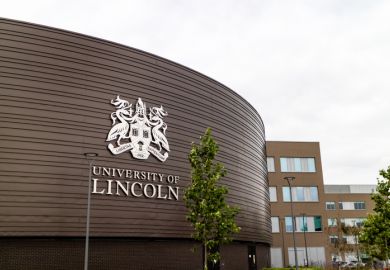Toiling away on a grant application can be a thankless task. Hours spent poring over guidance documents, discussing your proposal with colleagues, pinning down the finer points of your research’s impact and justifying your costing can end up wasted if a funding body rejects your idea.
Academics know only too well the squandered time and money that goes into applying for funding, but now steps are being taken to ensure that policymakers do too.
New research by the European University Association has looked at the true cost of applying for European Union research funding. The stakes have never been higher, as a squeeze on research funding in many countries means that competition for EU funding is at its stiffest yet.
The EU’s flagship research and innovation programme, Horizon 2020, will dole out €80 billion (£68.9 billion) between 2014 and 2020. During the programme’s first 100 calls, more than 30,000 full applications were made. But just 4,315 won funding, pegging a proposal’s chances of success at just 14 per cent.
The EUA’s research, due to be presented at the organisation’s third funding forum at the University of Porto, Portugal on 6 and 7 October, aimed to look at the real cost of all these unfunded proposals. It analysed the results of a mid-term review survey of Horizon 2020 from more than 300 of its members. The survey asked universities to estimate the average cost of preparing EU grant applications in terms of time and money.
The full report is not published until November, but Thomas Estermann, director for governance, funding and public policy development at EUA, spoke to Times Higher Education about its findings. “Low success rates are a huge issue for Europe,” he says. Not only are they inefficient, as the time spent developing proposals is wasted, but they can demotivate academics and top research ideas and potential groundbreaking discoveries may be rejected, he adds.
According to EUA calculations using data collected in the surveys, 30 to 50 per cent of the funding that countries get from Horizon 2020 goes to cover the costs of the total number of applications, successful or otherwise. “[People] only usually calculate what they get back from the funding programmes,” he says. Even if 18 per cent of proposals are funded, that still leaves 82 per cent unfunded, and “there is a high cost attached to that”.
The arithmetic, of course, is based on several simplified assumptions and averages. The cost of putting together a research grant application can vary significantly from a relatively simple proposal – involving a professor and his or her research student with no help from a university’s support services – to huge biomedical projects involving 30 to 50 partners with clinical trials. Putting together the latter can “quickly go over €100,000” in costs, Estermann estimates.
Based on an average proposal cost of €50,000 during the first 100 calls of Horizon 2020, where €5.5 billion was up for grabs, the EUA says Europe’s universities wasted about €1.4 billion on unsuccessful applications. “We just can’t afford that billions of euros are lost in the system,” he adds.
Countries that have had higher than average success rates for applications to Horizon 2020 so far, such as France, Belgium, Austria, Germany and the UK, need to do “real calculations” to work out the true cost of the funding they receive, he says. It is not enough to simply think they are doing better than most. Often these countries “forget about all the unfunded projects…who is paying for that?” he says.
“In countries where universities are funded to a high extent from public funding it is the public funder,” he adds.
He says that the urgency of the situation is now much greater than it was 10 to 15 years ago, when national funding was at a higher level in most European countries than it is now. As country-specific funding falls, more and more researchers are turning to EU money to finance their projects, so the low success rates matter more financially, he explains.
The chances of securing EU funding have been falling steadily over the past 20 years. In Framework Programme 5, Horizon 2020’s equivalent which ran from 1998 to 2002, more than a quarter of all proposals got funding. But by the 2002-06 Framework Programme 6, this fell to 18 per cent of applications, although it rose slightly to 19 per cent under the subsequent Framework Programme 7 running from 2007 to 2013.
What is more, the chances of succeeding in Horizon 2020 are intertwined with the health of a country’s own nationally funded research programmes, according to the EUA’s research. Looking at data from the Horizon 2020 mid-term review alongside that of the EUA’s Public Funding Observatory, which captures public funding trends in 28 EU countries since 2008 and is being published at the conference, reveals that cutting national funding makes a country’s EU funding applications less successful.
“It doesn’t work out to cut [public research funding] at national level and expect your institutions to get more funding at European level. It is actually the opposite – if you cut then you are in a position to be less competitive for European funding,” he explains.
Addressing the issues surrounding the cost of low success rates will require action from funders, researchers and universities, explains Estermann. Funders simply need more money, he says.
“[Universities] need to have a very strategic approach to European funding and only put forward the very best proposals. That means also they need to invest in support services,” he says.
National funders should also think about picking up the bill for some of the highest-quality Horizon 2020 proposals that do not secure funding. He admits that it would be challenging to coordinate, as multiple countries are involved in bids.
“But the point is if you see there are billions lost in the system then you are more encouraged, even if it is challenging, to find some solutions,” Estermann adds.
POSTSCRIPT:
Print headline: High price of EU funding bids revealed
Register to continue
Why register?
- Registration is free and only takes a moment
- Once registered, you can read 3 articles a month
- Sign up for our newsletter
Subscribe
Or subscribe for unlimited access to:
- Unlimited access to news, views, insights & reviews
- Digital editions
- Digital access to THE’s university and college rankings analysis
Already registered or a current subscriber? Login





